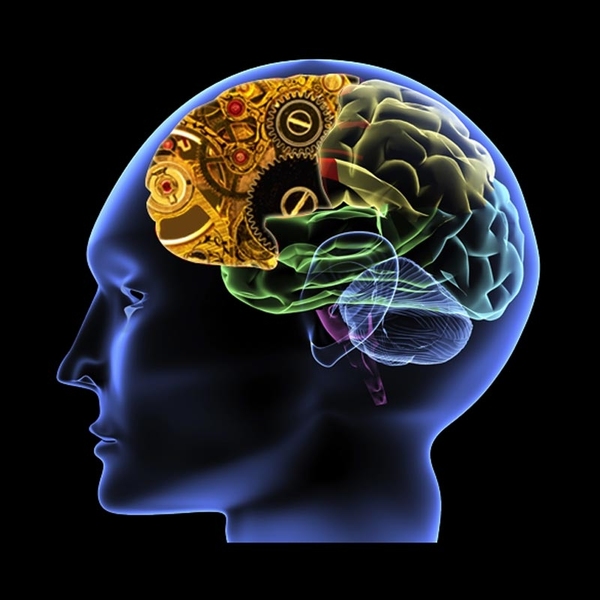Keeping track of time is one of the brain's most important tasks. As the brain processes the flood of sights and sounds it encounters, it must also remember when each event occurred. But how does that happen? How does your brain recall that you brushed your teeth before you took a shower, and not the other way around?
For decades, neuroscientists have theorized that the brain "time stamps" events as they happen, allowing us to keep track of where we are in time and when past events occurred. However, they couldn't find any evidence that such time stamps really existed — until now.
An MIT team led by Institute Professor Ann Graybiel has found groups of neurons in the primate brain that code time with extreme precision. "All you do is time stamp everything, and then recalling events is easy: you go back and look through your time stamps until you see which ones are correlated with the event," she says.
That kind of precise timing control is critical for everyday tasks such as driving a car or playing the piano, as well as keeping track of past events. The discovery, reported in this week's issue of the Proceedings of the National Academy of Sciences, could lead to new treatments for diseases such as Parkinson's disease, where the ability to control the timing of movements is impaired.
Construction of time
The research team trained two macaque monkeys to perform a simple eye-movement task. After receiving the "go" signal, the monkeys were free to perform the task at their own speed. The researchers found neurons that consistently fired at specific times — 100 milliseconds, 110 milliseconds, 150 milliseconds and so on — after the "go" signal.
"Soon enough we realized we had cells keeping time, which everyone has wanted to find, but nobody has found them before," says Graybiel, who is also an investigator in MIT's McGovern Institute for Brain Research. The neurons are located in the prefrontal cortex and the striatum, both of which play important roles in learning, movement and thought control.
The new work is an elegant demonstration of how the brain represents time, says Peter Strick, professor of neurobiology at the University of Pittsburgh, who was not involved in the research. "We have sensory receptors for light, sound, touch, hot and cold, and smell, but we don't have sensory receptors for time. This is a sense constructed by the brain," he says.
Key to the team's success was a new technique that allows researchers to record electrical signals from hundreds of neurons in the brain simultaneously, and a mathematical way to analyze the brain signals, spearheaded by team members Naotaka Fujii of the RIKEN Brain Institute in Japan and Dezhe Jin of Penn State. Though this study focused on the prefrontal cortex and striatum, Graybiel says she expects other regions of the brain may also have neurons that keep time.
Graybiel suggests that the new research could help patients with Parkinson's disease, who often behave as if their brains' timekeeping functions are impaired: they have trouble performing tasks that require accurate rhythm, such as dancing, and time appears to pass more slowly for them. Rhythmic stimuli such as tapping can help them to speak more clearly.
Targeting the timekeeping neurons with neural prosthetic devices or drugs — possibly including the natural brain chemicals dopamine and serotonin — may help treat those Parkinson's symptoms, she says.
Future studies in this area could shed light on how the brain produces these time stamps and how this function can control behavior and learning. The work also raises questions regarding how the brain interprets the passage of time differently under different circumstances.
"Sometimes time moves quickly, and in some situations time seems to slow down. All of this ultimately has a neural representation," says Strick.
For decades, neuroscientists have theorized that the brain "time stamps" events as they happen, allowing us to keep track of where we are in time and when past events occurred. However, they couldn't find any evidence that such time stamps really existed — until now.
An MIT team led by Institute Professor Ann Graybiel has found groups of neurons in the primate brain that code time with extreme precision. "All you do is time stamp everything, and then recalling events is easy: you go back and look through your time stamps until you see which ones are correlated with the event," she says.
That kind of precise timing control is critical for everyday tasks such as driving a car or playing the piano, as well as keeping track of past events. The discovery, reported in this week's issue of the Proceedings of the National Academy of Sciences, could lead to new treatments for diseases such as Parkinson's disease, where the ability to control the timing of movements is impaired.
Construction of time
The research team trained two macaque monkeys to perform a simple eye-movement task. After receiving the "go" signal, the monkeys were free to perform the task at their own speed. The researchers found neurons that consistently fired at specific times — 100 milliseconds, 110 milliseconds, 150 milliseconds and so on — after the "go" signal.
"Soon enough we realized we had cells keeping time, which everyone has wanted to find, but nobody has found them before," says Graybiel, who is also an investigator in MIT's McGovern Institute for Brain Research. The neurons are located in the prefrontal cortex and the striatum, both of which play important roles in learning, movement and thought control.
The new work is an elegant demonstration of how the brain represents time, says Peter Strick, professor of neurobiology at the University of Pittsburgh, who was not involved in the research. "We have sensory receptors for light, sound, touch, hot and cold, and smell, but we don't have sensory receptors for time. This is a sense constructed by the brain," he says.
Key to the team's success was a new technique that allows researchers to record electrical signals from hundreds of neurons in the brain simultaneously, and a mathematical way to analyze the brain signals, spearheaded by team members Naotaka Fujii of the RIKEN Brain Institute in Japan and Dezhe Jin of Penn State. Though this study focused on the prefrontal cortex and striatum, Graybiel says she expects other regions of the brain may also have neurons that keep time.
Graybiel suggests that the new research could help patients with Parkinson's disease, who often behave as if their brains' timekeeping functions are impaired: they have trouble performing tasks that require accurate rhythm, such as dancing, and time appears to pass more slowly for them. Rhythmic stimuli such as tapping can help them to speak more clearly.
Targeting the timekeeping neurons with neural prosthetic devices or drugs — possibly including the natural brain chemicals dopamine and serotonin — may help treat those Parkinson's symptoms, she says.
Future studies in this area could shed light on how the brain produces these time stamps and how this function can control behavior and learning. The work also raises questions regarding how the brain interprets the passage of time differently under different circumstances.
"Sometimes time moves quickly, and in some situations time seems to slow down. All of this ultimately has a neural representation," says Strick.







